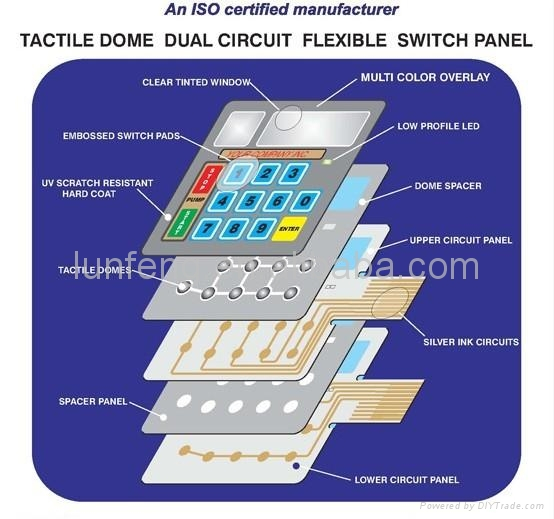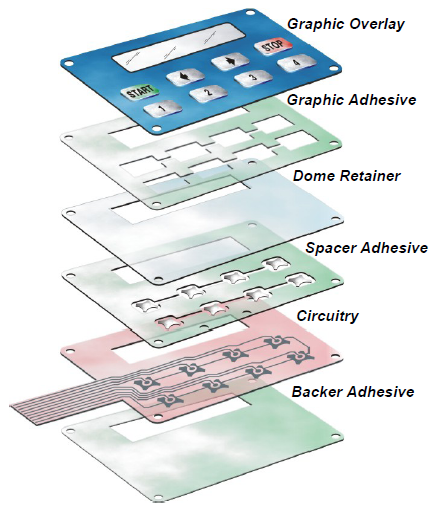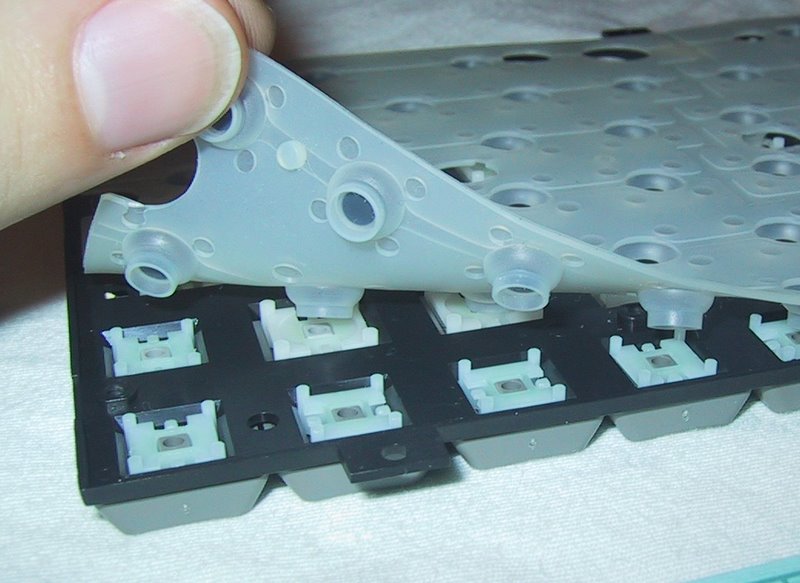Innovations in Membrane Switches for Touch-Sensitive Devices
Comprehending the Importance of Membrane Switches in Interface
Membrane buttons are integral elements in the layout of efficient customer interfaces, helping with not only capability yet additionally boosting visual allure and individual communication. As we check out the various advantages and future patterns linked with Membrane technology, it becomes clear that these buttons are much more than simply components; they represent a merging of innovation and practicality.
What Are Membrane Buttons?

The spacer layer, which consists of adhesive buildings, permits the separation of the circuit layer from the overlay, guaranteeing that the button remains in a non-activated state until pushed. When stress is put on the overlay, it compresses the spacer layer, bridging the space and finishing the circuit in the underlying layer. This style not just minimizes the physical space needed for traditional mechanical buttons but also boosts the resilience of the tool, as Membrane buttons are usually immune to dirt, moisture, and other ecological variables.
Commonly located in applications varying from customer electronics to medical devices, Membrane buttons are essential to modern-day technology, supplying a reliable and easy to use user interface that aligns with modern design needs.
Advantages of Membrane Switches
While various switch technologies exist, Membrane Switches deal distinct advantages that make them especially desirable in different applications. Among the main benefits of Membrane buttons is their small layout, which permits space-saving applications in tools where realty is limited. Their slim profile not just enhances aesthetic appeal yet additionally assists in light-weight building and construction.
An additional significant benefit is their resistance to ecological variables. Membrane buttons are generally secured against wetness, dirt, and impurities, making them suitable for usage sought after settings, such as clinical tools and industrial equipment. This resilience expands the life expectancy of the button, reducing maintenance expenses and improving dependability.
Additionally, Membrane buttons can be tailored to meet particular design demands, including one-of-a-kind graphics and shades that enhance customer communication. Their tactile feedback options can likewise be customized to offer a gratifying individual experience. Furthermore, Membrane buttons are affordable, especially in high-volume applications, as they can be produced efficiently.
Applications in Various Industries

In the consumer electronic devices field, Membrane buttons are common in devices such as microwaves, cleaning devices, and remote controls. Their responsive feedback and visual alternatives enhance customer experience while providing a smooth, modern-day appearance. Furthermore, auto makers use Membrane switches in control panel controls and check this infomercial systems, where space is limited, and user involvement is critical.
In addition, the industrial market leverages Membrane switches in control panels for equipment and tools, enabling instinctive operation in typically extreme settings. Their resistance to chemicals and dampness ensures longevity and integrity in these applications. Generally, the adaptability of Membrane Switches contributes dramatically to their prevalent usage, making them indispensable in various technical domain names.
Layout Considerations for Membrane Buttons

When making Membrane buttons, several key factors to consider must be taken into consideration to make certain ideal capability and user experience. The option of products is crucial; choosing durable, top quality substratums can enhance the button's longevity and resistance to ecological aspects such as wetness and temperature changes.
Second of all, the style of the visuals overlay need to prioritize clearness and simplicity of use. Symbols and message have to be legible, and the design should facilitate instinctive interaction (membrane switches). In addition, tactile feedback is necessary; integrating a tactile dome or other systems can boost the individual experience by giving physical confirmation of activation
One more essential aspect is the button's electrical performance. Developers have to make sure that the conductive traces are correctly designed to decrease resistance and avoid signal disturbance. This includes assessing the needed actuation force and ensuring compatibility with the digital parts they will interface with.

Future Fads in Membrane Modern Technology
As innovation proceeds to advance, Membrane buttons are positioned to advance considerably, driven by technologies in products and manufacturing techniques. One arising fad is the consolidation of innovative products, such as conductive inks and versatile substrates, which boost longevity and lower the general weight of Membrane switches. These products not only boost the responsive feedback visit this site however also permit the layout of buttons that can endure harsher ecological conditions.
In addition, the combination of touch-sensitive technologies is transforming traditional Membrane Switches into even more interactive individual interfaces. Capacitive touch sensors installed within Membrane button panels can supply a much more responsive and intuitive user experience, straightening with the growing demand for streamlined, contemporary designs in consumer electronics.
In addition, improvements in printing methods, such as digital and 3D printing, allow rapid prototyping and modification of Membrane buttons. This adaptability permits suppliers to react quicker to market needs and customer preferences.
Last but not least, sustainability is coming to be a substantial focus, with makers checking out eco-friendly materials and processes. As these fads unravel, the future of Membrane technology guarantees boosted functionality, visual allure, and environmental responsibility, strengthening their duty in innovative individual interfaces throughout different sectors.
Verdict
In conclusion, Membrane Switches stand for an important component in the design of user interfaces, incorporating performance with aesthetic versatility. Their advantages, consisting of toughness and resistance to environmental why not try these out variables, make them ideal for varied applications throughout numerous industries. Thoughtful layout considerations boost user communication and experience. As developments in modern technology continue, the evolution of Membrane buttons is anticipated to more refine user interfaces, driving technology and improving usability in an increasingly intricate technical landscape.
Membrane buttons are integral parts in the design of effective user interfaces, assisting in not only functionality yet additionally improving visual allure and user interaction.Membrane Switches serve as a crucial part in different customer interfaces, helping with a seamless communication between individuals and electronic tools.While various button innovations exist, Membrane Switches offer distinct benefits that make them especially desirable in various applications.Furthermore, Membrane buttons can be tailored to fulfill particular design demands, integrating special graphics and shades that improve individual interaction.In final thought, Membrane Switches represent a crucial component in the design of customer interfaces, incorporating performance with aesthetic flexibility.